Joshiraku 04 – notes and the like This entry was posted by Vale.
She’s performing an actual rakugo story, the Cat’s Plate (猫の皿 neko no sara). It’s about a cunning merchant who tries to rip off a poor shopkeeper but gets ripped off instead. Kakiemon wares are very high quality porcelain pottery.
The Japanese belief is that these figures (called てるてる坊主 teru-teru bouzu) ward off rain.
I believe this is self-explanatory.
Loan Shark Ushijima… It’s a cool story. Not to mention the ad for its new live-action movie always airs around E7, so I see it a lot. The music is so badass.
I think Nobita from Doraemon was the first character ever to have his eyes turn into 3’s when he takes off his glasses.
Might be a Katte ni Kaizou reference, because there one of the characters has glasses like those too.
Why is Marii so perfect? (Those glasses are not only the same as what Gankyou wears, but also very much like Nodoka’s from K-On! and young Homura’s from Madoka.)
Comedians. They appear in reverse order on screen.
This is so (Ku)meta…
That Yui is from Rakugo Tennyo Oyui (落語天女おゆい), one of the first goddesses of rakugo anime.
That’s Kim Jong-il pressing his son’s (Kim Jong-un) nipple and thus launching a rocket. The rocket is an Eunha-2 that was tested this April, causing major international stirup. Useless Japanese slang #411: あの方 (ano kata), “him” used to refer to Kim Jong-il.
Part two is the punny part again. The train line in question is called the Yurikamome (black-headed gull, also known as the laughing gull). The “yuri” is the yuri from “lily” and “lesbian”.
I had to change this to keep the joke working. Originally she asks if yurikamome are all lesbians, with Kukuru pointing out they couldn’t reproduce then.
The word for gang in biker gangs (暴走族 bousou-zoku) and the 属 (zoku) in scientific nomenclature sound the same. In the background you can see the typical gang-style use of kanji readings to make ordinary stuff look cool: 悪霧雷洲 (o-mu-rai-su, rice omelette) and 四路死苦 (yo-ro-shi-ku, a politeness formula, sometimes also gangified as 夜露死苦).
関取 (sekitori) ranked sumo wrestlers are said to be unable to wipe their own arses. (I’d prefer not to go to verify it myself.)
Pocky is probably one of the greatest things in Japan.
Language lesson for you. The kanji she drew was 入 for “enter” and not 人 for “person”. She could’ve just looked at Marii’s shirt, which reads 人として (hito toshite), a reference to the awesome SZS opening song (the full title of which is 人として軸がぶれてる hito toshite jiku ga bureteru). They then write it in hiragana (then add diacritics) and katakana. The “feel” of the word changes a lot by that.
Mori Mitsuko was the first actor in Japan to perform the Hourouki 2000 times. Her performance was famous for involving a roll until she was simply too old to do it anymore.
This is the reason I kept the word “brute” in those lines earlier. If you don’t get this reference, go back to middle school.
Please remember that this show airs on MBS. Those characters waving at them from the building are the Fuji TV children’s show Ponkikki’s characters Gachapin and Mukku.
In Japanese, the word for motion sickness and getting drunk is the same 酔う (you). She’s drinking whiskey.
Comiket for you. Who do you recognize? (I know ten just from this screen.) There are a lot to figure out.
十五夜 (juugoya, a full moon night) and 十五の夜 (juugo no yoru) are actually very similar, but the latter is a song.
The Japanese see a rabbit pounding mochi in the moon.
Which countries see those things in the moon?
You all know those inkblot tests, right?
The song titled Homeland (故郷 furusato). It’s an old children’s song composed by the Ministry of Education in 1914.
(Laughed at this scene so badly.) There are multiple theories as for why Tetora’s defense abilities wouldn’t activate here. The most likely is that she’s actually enjoying it. (In the manga she keeps singing too.)
The Tortoise and the Hare is one of Aesop’s fables.
Kaguya, the princess of the moon from one of the earliest known Japanese narrative (also very early sci-fi).
Go and watch Ghibli’s Laputa. I’ll do the same.

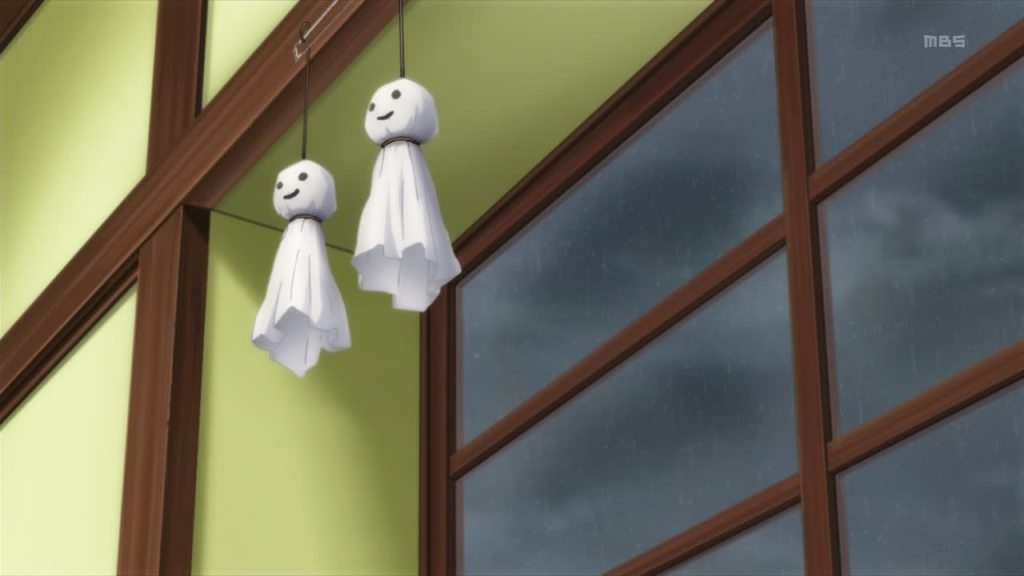







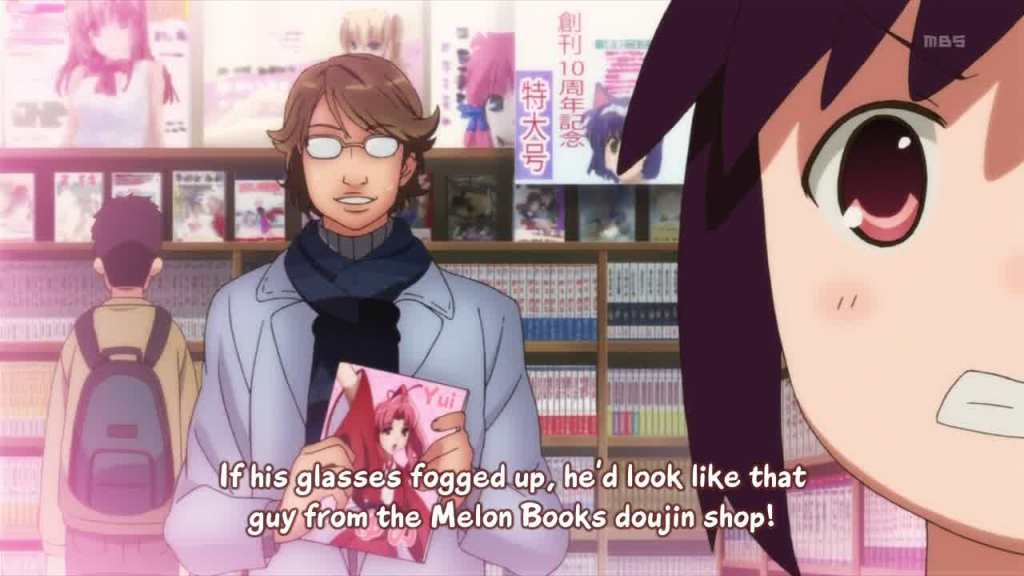

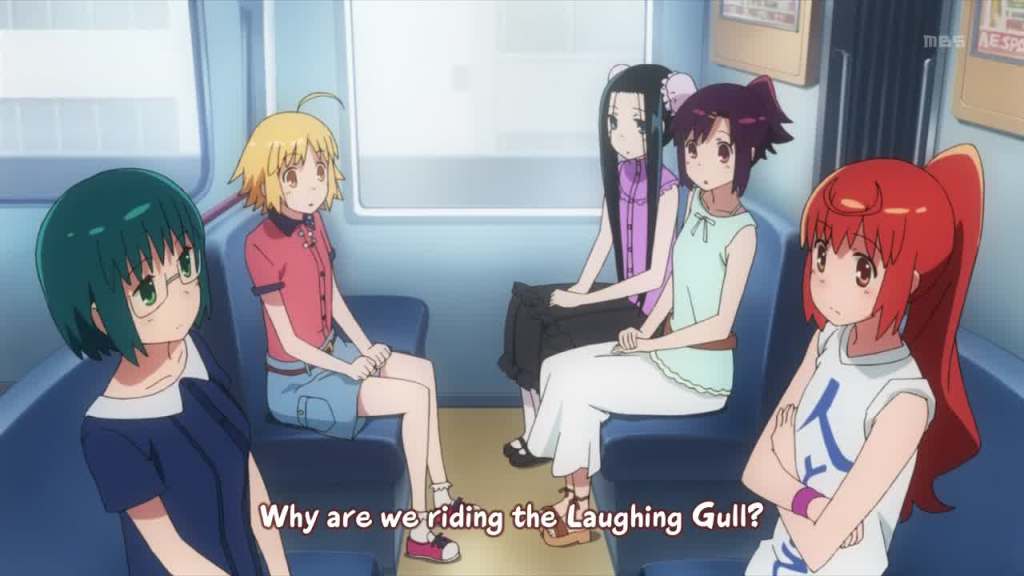


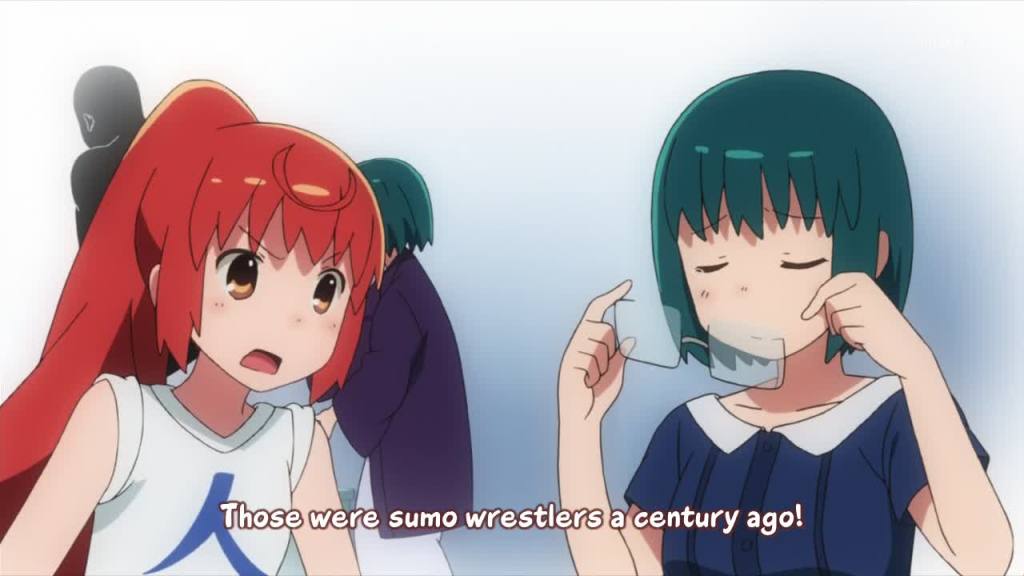
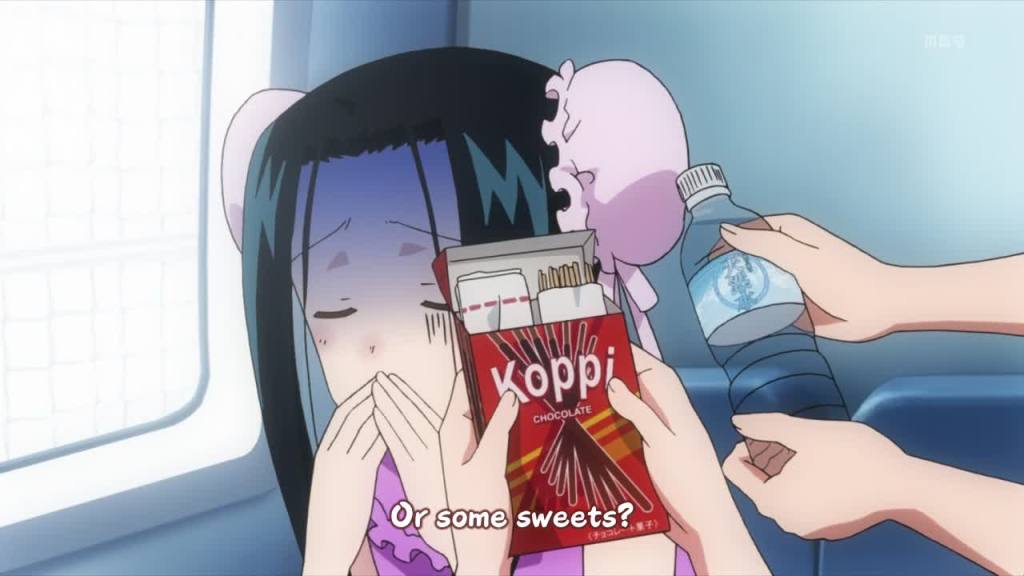

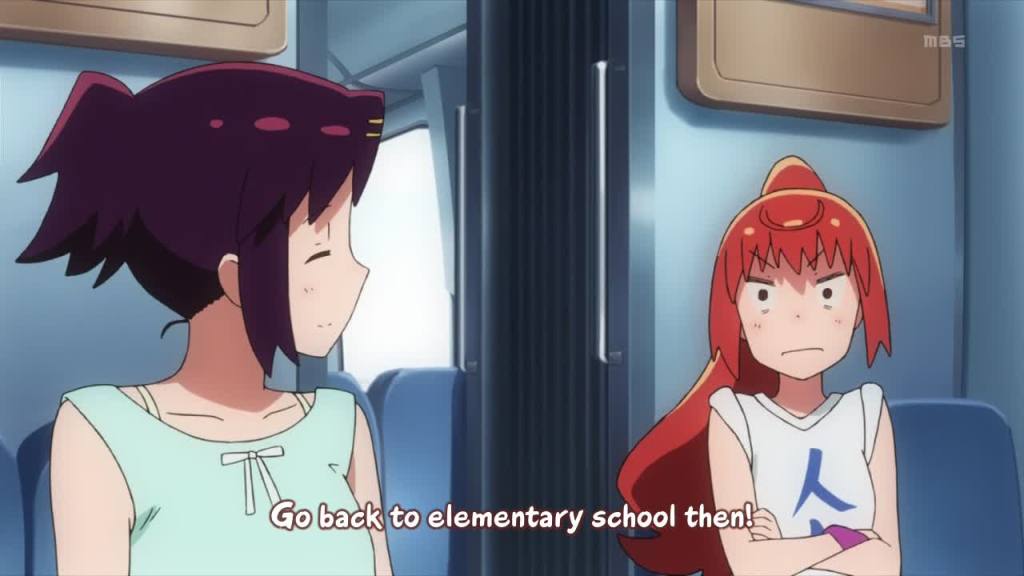








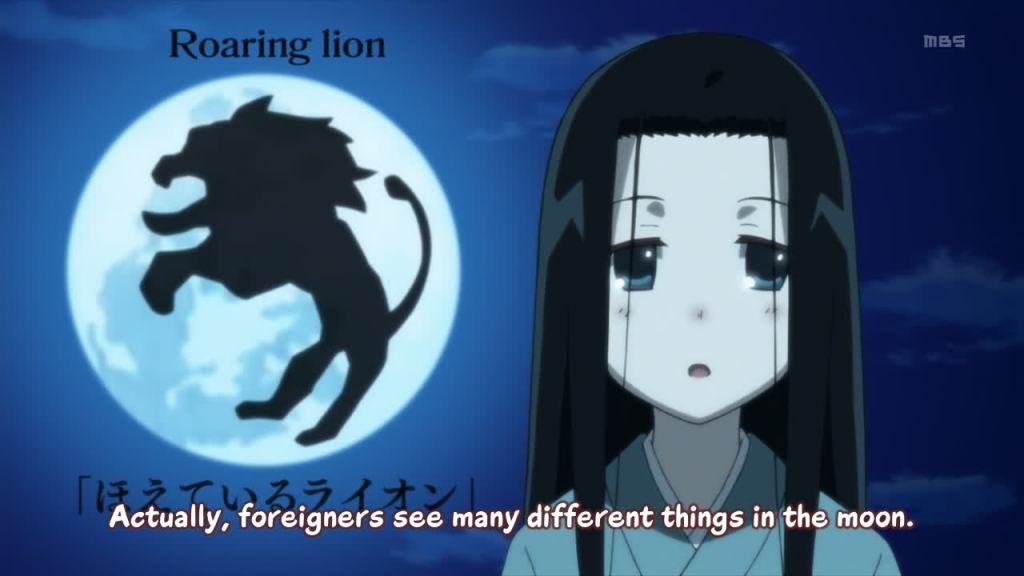



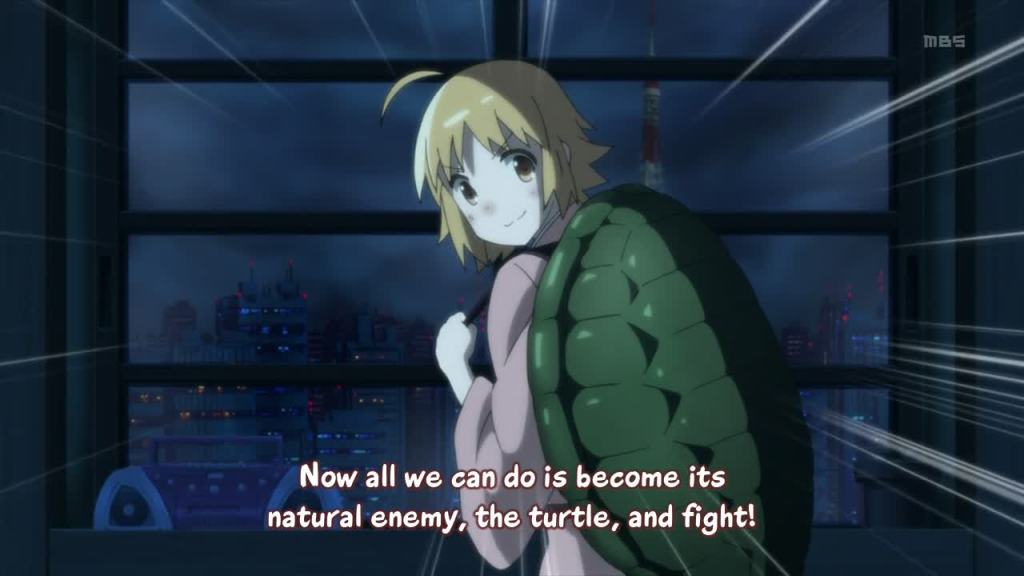
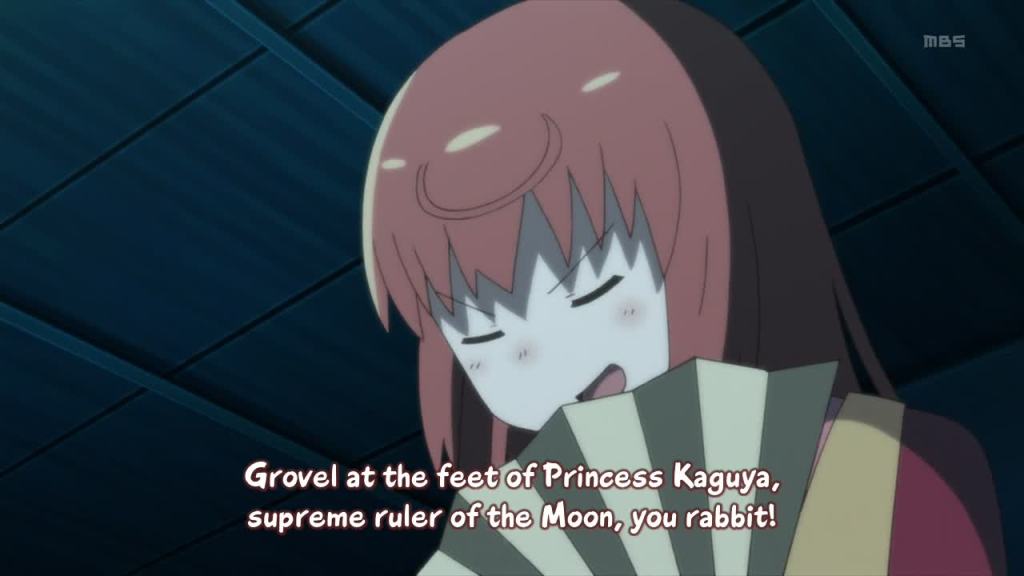

Also, in the pic with Yui’s reference… that guy is the one from Winter Sonata.
I get the reference to Shakespeare when they show Kukuru’s stomach, but why is there a bunch of little girls in her stomach?
One more reference: http://i.imgur.com/ygpKv.jpg (the exact same line is being said with a very similar intonation).
Coincidence??
YOU DECIDE!!
Now I feel that I was such a n00b
Something I’ve been curious since you mentioned that Marii and Gankyou are a seat above the rest, do rakugo performers don’t follow the standard seniority hierarchies? I mean in how they treat Marii.
These girls don’t really care about it apparently. Though if you think about it, only Gankyou is beating Marii…
Why did you translated hikkikomori as NEET? I’m sure we all are well aware of the diference, so I won’t point them out
Why did you say translated instead of translate? I’m sure we all are well aware of the difference, so I won’t point it out.
hahaha xD
Thanks for the notes. I heard/read somewhere that the Fuji TV section was also a reference to some controversy over the station, due to some supposed favouring of Korean content (i.e. TV dramas, etc.). There were big protests about it and everything.
Thanks for the hard work!
Isn’t Gestaltzerfall instead of Gestaltzerwall?
Thank you for the notes!
Have you even watched the episode? Tetora says it wrong, and Marii points that out.
No, I still haven’t….
It kinda kills the fun of it to read the notes before watching it…
+1
Thanks for the notes!
But What’s the meaning of “Gestaltzerwall”?
http://en.wikipedia.org/wiki/Gestaltzerfall (She says it wrong)
Thanks a lot for your explaining
Can we expect the next subs soon? I just donated to gg 5 bucks (´・ω・`)
Pingback: Joshiraku 07 – notes and the like « Not Red Reviews
That Sabae part is actually significant, see http://w2chw.blog.fc2.com/blog-entry-208.html
of course there are news about sabae, but how exactly is that particular piece of “news” relevant to joshiraku?
I live in Bangladesh, and I’ll say that we see an old woman on the moon. So the part about seeing things on the moon is accurate, and I understood that reference.